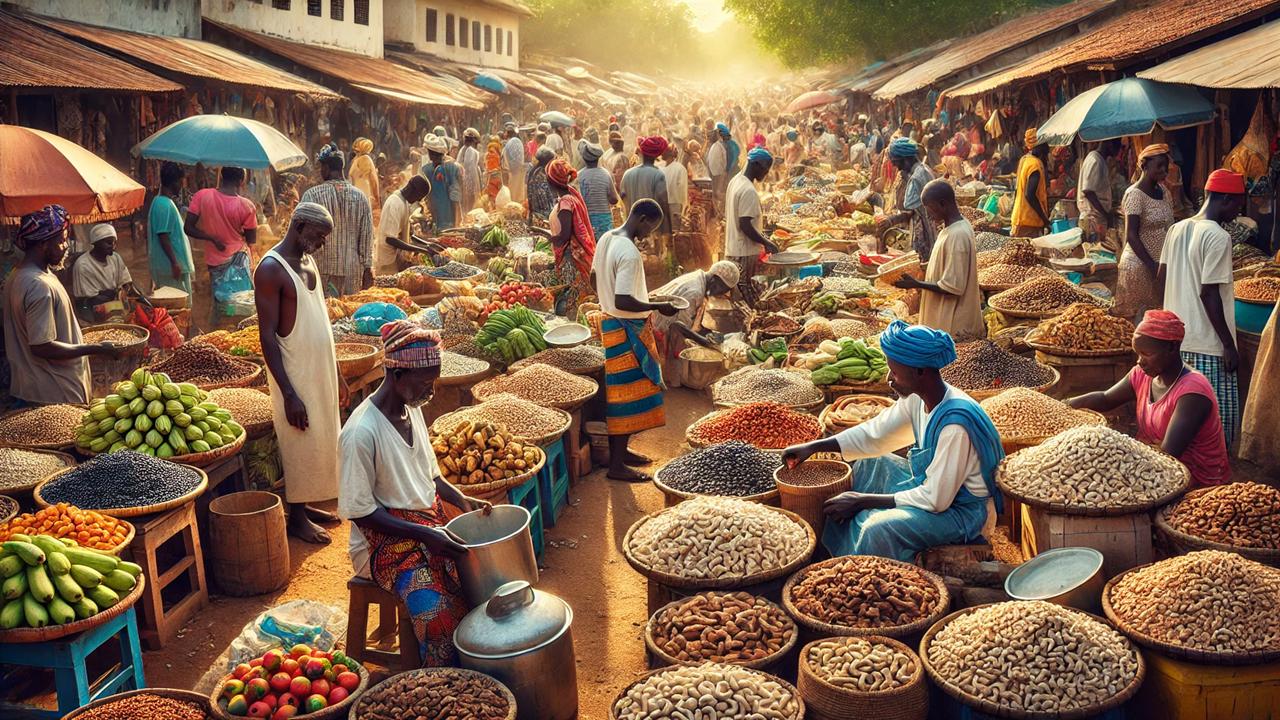Guinea Bissau: Rising Poverty Amid Economic Struggles
The World Bank report, "Poverty, Shared Prosperity, and Equity Update – Guinea Bissau," reveals a significant increase in poverty in Guinea Bissau, with the rate rising from 47.7% in 2018 to 50.5% in 2021. The report highlights economic volatility, sectoral challenges, regional disparities, and provides policy recommendations for reducing poverty and promoting inclusive growth.

A Nation Grappling with Increasing Poverty
In a detailed report by the World Bank, titled "Poverty, Shared Prosperity, and Equity Update – Guinea Bissau," the economic challenges and rising poverty levels in Guinea Bissau have been brought to the forefront. This West African nation has seen a significant increase in poverty, with the overall rate climbing from 47.7 percent in 2018 to 50.5 percent in 2021. This spike in poverty translates to over 80,000 more individuals falling below the poverty line in just three years.
The report highlights that the poverty gap, which measures how far below the poverty line households fall, and the severity index, which gives more weight to the poorest households, have both worsened. The rural areas, home to the majority of the poor, have been particularly hard hit, with poverty rates increasing by 4.1 percentage points compared to a 3.3 percentage point rise in urban areas.
Economic Turbulence and Vulnerabilities
Guinea Bissau’s economy has experienced volatile growth over the past decade. After a notable rebound in 2021, where the GDP per capita grew by 6.4 percent, the economy slowed down to 3.5 percent in 2022, with further deceleration expected in 2023. The nation remains vulnerable to external shocks such as terms-of-trade changes and climatic risks. The COVID-19 pandemic, disruptions in global supply chains, and rising food prices have exacerbated these vulnerabilities.
The agricultural sector, particularly cashew nuts which account for 90 percent of the country's exports, has been struggling. Declining prices and volatile international demand since 2018 have hit farmers hard. Governance and market failures keep farmgate prices much lower than export prices, undermining rural incomes. Despite an increase in cashew yields, rural households have seen little benefit, keeping poverty levels high.
Inequality and Consumption Trends
Interestingly, while overall consumption has contracted, the poorest urban households have seen some positive growth rates. This is reflected in the decline of the Gini coefficient, a measure of inequality, from 31.6 in 2018 to 29.9 in 2021. Urban areas, particularly Bissau, have seen more significant reductions in inequality compared to rural regions.
However, the disparity in consumption growth between rural and urban areas is stark. Rural households experienced a larger contraction in consumption compared to urban households. The poorest urban dwellers benefited from positive consumption growth, while in rural areas, even the poorest experienced a decline.
Regional Disparities and Future Outlook
The report also sheds light on regional disparities. The regions of Oio, Gabu, and Quinara have the highest poverty rates, with Oio at a staggering 72 percent in 2021. Over half of the poor population resides in these three regions. In contrast, regions like Cacheu, Bolama/Bijagos, and Bafata have seen reductions in poverty rates.
Comparing Guinea Bissau to other WAEMU countries, its poverty rate is relatively high, with only Niger and Togo having higher rates. Between 2018 and 2021, Guinea Bissau was one of the three WAEMU countries that experienced an increase in poverty, with a rise of 4.3 percentage points.
Looking ahead, the poverty rate is expected to decline slightly, reaching 22.6 percent by 2026. This anticipated reduction is due to improvements in the agricultural sector and lower food prices. Higher cashew prices and lower food prices are expected to enhance household purchasing power, benefiting the poorest who spend a significant portion of their income on food.
Structural Reforms and Policy Recommendations
To effectively combat poverty, the report emphasizes the need for structural reforms. These reforms should address market failures, enhance agricultural productivity, and ensure inclusive growth. Policies should focus on improving rural infrastructure, and market access, and diversifying the economy to reduce vulnerability to external shocks.
In conclusion, while Guinea Bissau faces significant economic challenges and rising poverty, there is a pathway to recovery through targeted reforms and policies aimed at fostering inclusive growth and reducing vulnerabilities.
- FIRST PUBLISHED IN:
- Devdiscourse
ALSO READ
Karnataka CM Siddaramaiah Warns of Rising Caste Inequality Amidst Religious Divisions
World Bank Approves $110M Loan to Strengthen Fiscal Sustainability and Natural Resource Management in Sergipe, Brazil
World Bank Projects Viet Nam's Economic Growth to Rebound in 2024, Urges Capital Market Development
World Bank's Boost for Delhi's Urban Transit Future: A New Collaboration with NCRTC
UN Women Condemns New Afghan Morality Law for Deepening Gender Inequality and Restricting Women’s Rights










